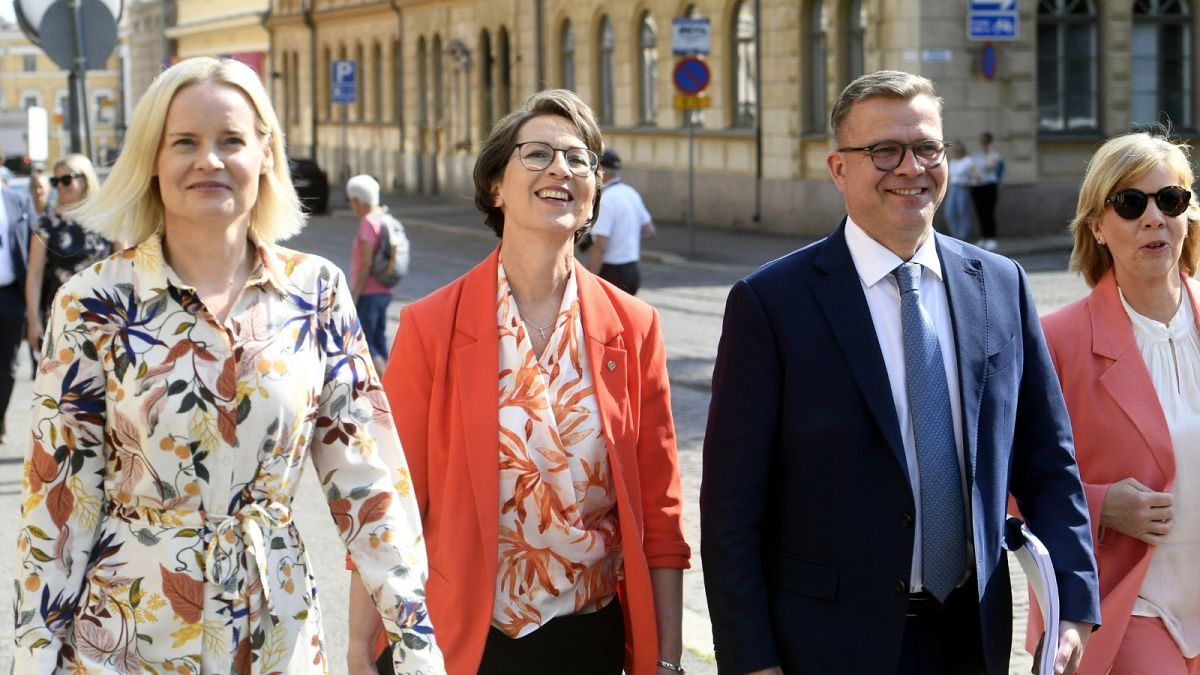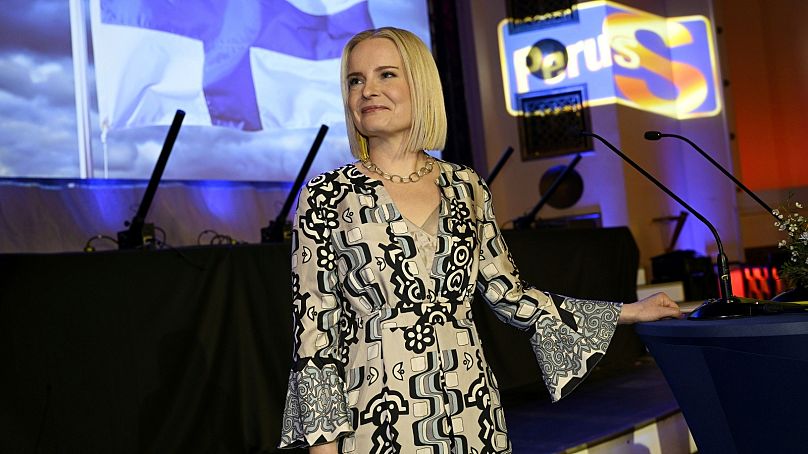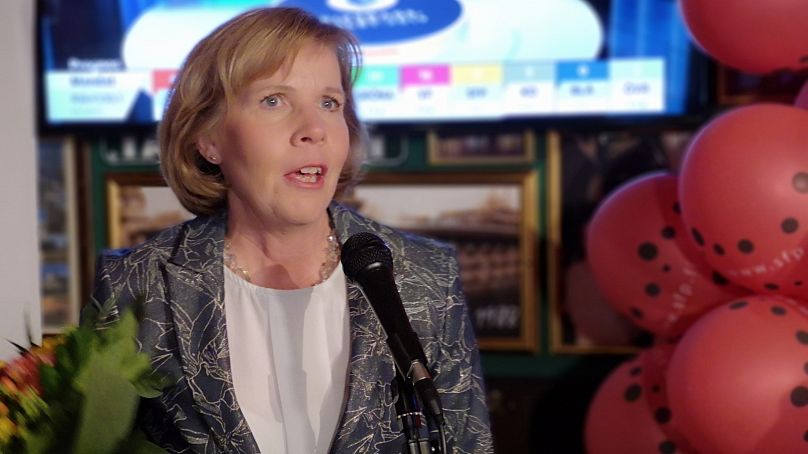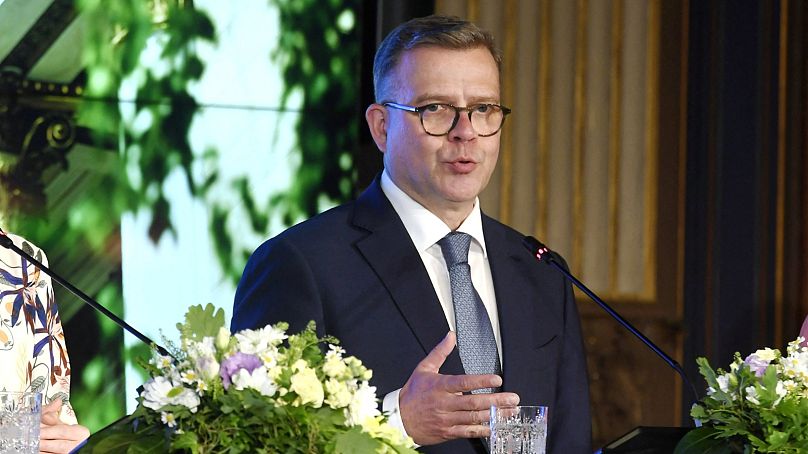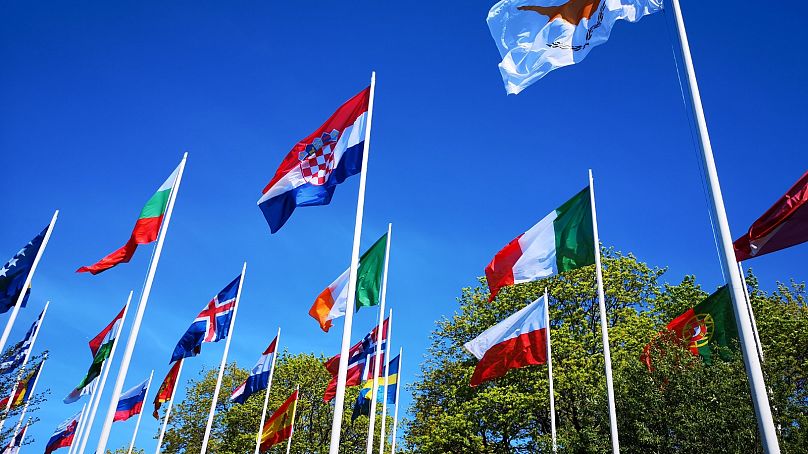From tax cuts to climate change, increased VAT to Finland's international reputation, here's some key things you should know.
The setting and symbolism couldn't have been more striking, or more different.
After the 2019 Finnish election, the parties of the new coalition government presented their policy programme in Helsinki's spectacular Oodi Central Library in the morning over coffee, and took questions from the public and journalists alike -- before embarking on a tour of town halls up and down the country to have conversations with voters about the future direction of Finland.
Compare that with 2023, when the four parties which make up Finland's new coalition government summoned journalists at 6pm on a Friday evening, no members of the public allowed, to unveil their policy agenda -- which came after seven weeks of fractious negotiations.
The right-wing National Coalition Party, known locally as Kokoomus, emerged from the April general election with the most seats in parliament, and partnered with the next biggest group, the far-right Finns Party. Also on board are the Christian Democrats and the Swedish People's Party, with Kokoomus leader Petteri Orpo as Finland's next prime minister.
So what are some of the key things we know already about the new government programme, and how might it all unfold now:
1. This is the most right-wing Finnish government in modern times
Kokoomus has a vocal EU-sceptic and immigrant-sceptic wing. The Christian Democrats' best-known MP is anti-abortion, and became something of a cause celebre among the US Christian right when she carried a bible into court to face charges of being anti-LGBT. She was later cleared.
Meanwhile, the Finns Party's track record on immigration, the EU and fighting the climate crisis speaks for itself.
There are also several Finns Party MPs, including senior party members, with convictions for race-related crimes, and the younger cadre of Finns Party politicians who came to prominence during the last two election cycles have a fondness for Donald Trump's MAGA movement.
"Petteri Orpo's government programme is building a European, free and secure Finland that will not just sit on its hands," insists Kokoomus MP Elina Valtonen, who is likely to land one of the big ministerial portfolios in the new government.
"A strong and caring NATO Finland, where consumer choice increases, entrepreneurship pays, skills are valued, living standards rise and nature is cared for," she adds.
But political analyst Juho Rahkonen says "we have a more right-wing government than perhaps ever before," a stark contrast to outgoing Prime Minister Sanna Marin's five-party center-left coalition.
Finns Party leader Riikka Purra said the Nordic nation should opt for a tougher immigration line, and called for stricter asylum policy, time-limited protection of asylum-seekers, mandatory integration, and plans to reduce the number of quota refugees, saying those policies would amount to "a paradigm shift."
2. The Swedish People's Party is taking a reputational gamble
No party has more at stake in this coalition government than the Swedish People's Party SFP/RKP.
With ten seats in parliament, they are the only party which was also in the previous government -- an administration which put intersectional feminism at the heart of policymaking with Sanna Marin as prime minister.
Over the last four years they've moved further to the left on issues of internationality, multi-culturalism, human rights and immigration -- an anathema to the Finnish right-wing.
Before negotiations, SFP/RKP leader Anna-Maja Henriksson said she wouldn't be in the government if it was doing Finns Party politics, but she seems to have capitulated and it's difficult to see at this stage what she has actually won for her party -- except perhaps to prolong Finland's widely-criticised fur farming industry, which employs around two thousand people, many of them in her own constituency area.
For a party that's already divided between it's Ostrobothnia 'countryside' voters and the southern coastal 'city' voters, the Swedish People's Party might have lost the chance to appeal to other non-Swedish-speaking Finns, immigrants and young people as potential voters, by joining up with a far-right party in government -- indeed their own youth group leadership quit the government formation talks in protest at cooperation with the Finns Party, and Henriksson admitted on Friday that still not all her MPs were in favour of being in government with them.
3. Four billion in savings needed
Petteri Orpo promised to find €4 billion in savings to reduce Finland's debt, and that means a mixture of cuts -- which are never popular with the people on the receiving end.
There's also cost savings, of course, and fundraising in the form of a VAT increase on items with a 10% rate which will go up to 15%. This makes it even more expensive to buy medicines, take part in sports, go to the cinema or cultural events, or book a hotel room.
"Before the elections, we promised to put the country's affairs in order. We promised an adjustment of €6 billion and 100,000 new jobs," says Kokoomus MP Sinuhe Wallinheimo.
Most of the savings are coming from €1.5 billion cuts to social security, and by re-jigging how regional healthcare systems are funded from the central government to generate efficiency savings.
There will be freezes for the next four years on earnings-related unemployment insurance, housing allowance and some other benefits.
There's cuts of €125 million for education and culture grants, and an adult education subsidy will also be scrapped. Some €250 million will be cut from funding for new roads projects and another €250 million from development aid budgets.
Tax on beer will decrease, but taxes on wines, spirits and soft drinks will go up.
"There is enough money for investors and high earners, but poor families with children, students and the elderly are being cut," says Jussi Saramo, chair of the Left Alliance Parliamentary Group.
"For example, massive housing benefit cuts will hit students, single parents and those working in low-wage jobs hard," he says.
4. Fighting the climate crisis
The previous Finnish government were enthusiastic about setting targets to meet and even exceed international agreements on carbon emissions - even if they were less enthusiastic about taking enough concrete steps to meet those goals fast enough.
Within the new government, the Finns Party has been opposed to the idea that Finns -- who they say are among the least polluting people on the planet -- should have to take radical steps to fight the climate crisis when this should be done by big polluting countries instead.
They've also wanted to lower the price of petrol and resisted calls to reduce the number of petrol cars on Finnish roads.
"The new government is very much leaning towards the conservative right and takes Finland backwards when it comes to climate action and biodiversity protection," says Ville Niinistö, a Finnish Green MEP.
"The financing for nature protection is reduced by one-third from the previous Marin government and therefore we have no tools to protect our forests and waterways in line with global commitments to stop biodiversity loss," he tells Euronews.
Niinistö notes that while the new government doesn't formally back down on the commitment to be carbon neutral by 2035, its policies are "leading away from that goal".
The new government plans to reduce tax on petrol by €100 million, and reduce vehicle taxes by €50 million.
5. Finland's international reputation could take a hit
In large part thanks to Sanna Marin's profile, Finland has enjoyed unprecedented good press internationally over the last four years.
From being the happiest country in the world to putting extra money into development aid for women and children when the Trump administration withdrew support, Finland has shored up its credentials as a reliable partner.
But now there will be cuts to international aid, amounting to hundreds of millions of euros. Finland will also be less welcoming to asylum seekers and so-called 'quota migrants.'
And having a far-right party in power probably doesn't do a lot to burnish Finland's brand image as a friendly, welcoming country.
Kokoomus MP Saara-Sofia Sirén says that in the new government programme, Finland "promotes the rights of women and girls across its foreign policy."
"The priorities of the government's development policy are strengthening the status of women and girls, the right to self-determination, and sexual and reproductive health," but doesn't address whether budget cuts to international aid will impact the scope or scale of the services which Finland currently funds.
